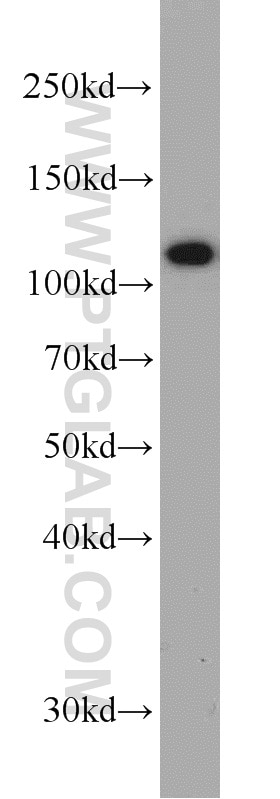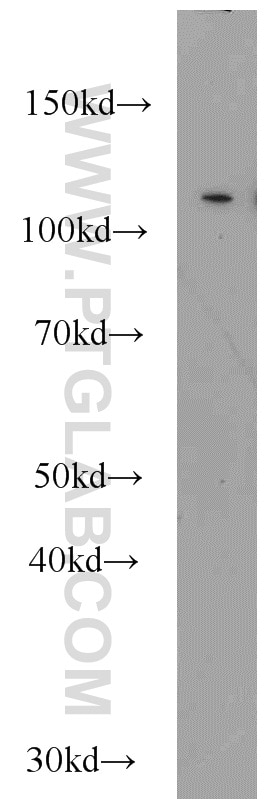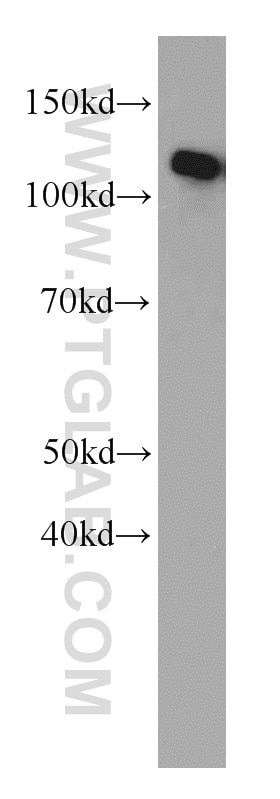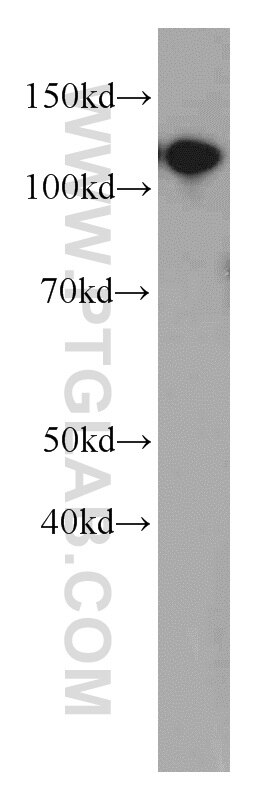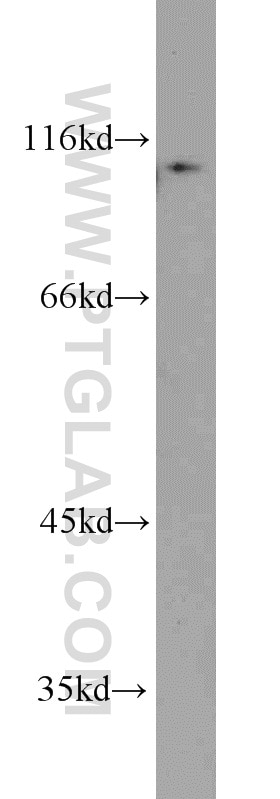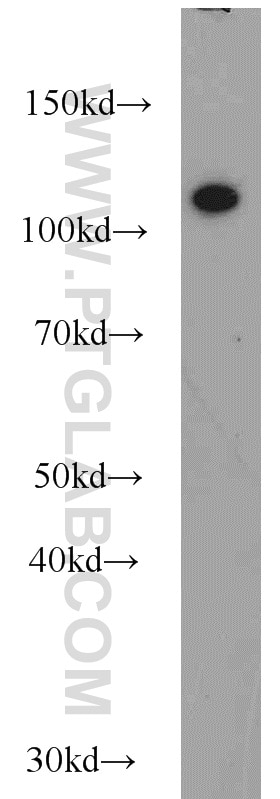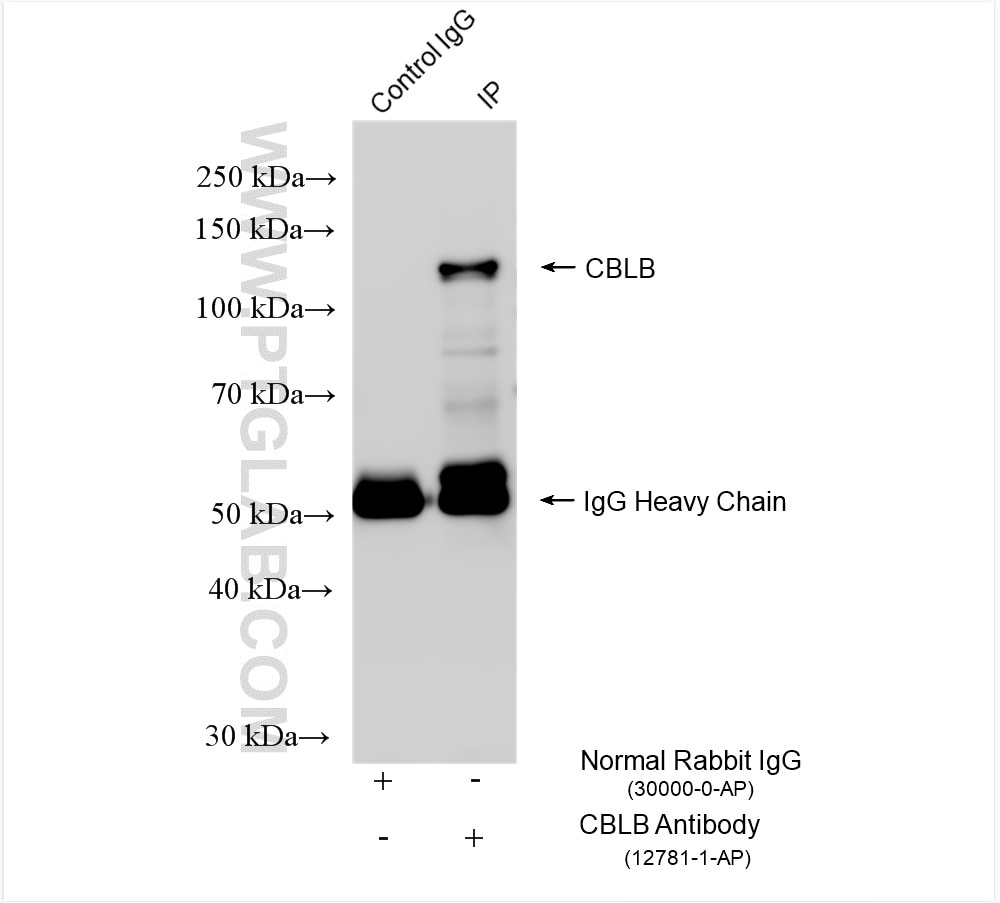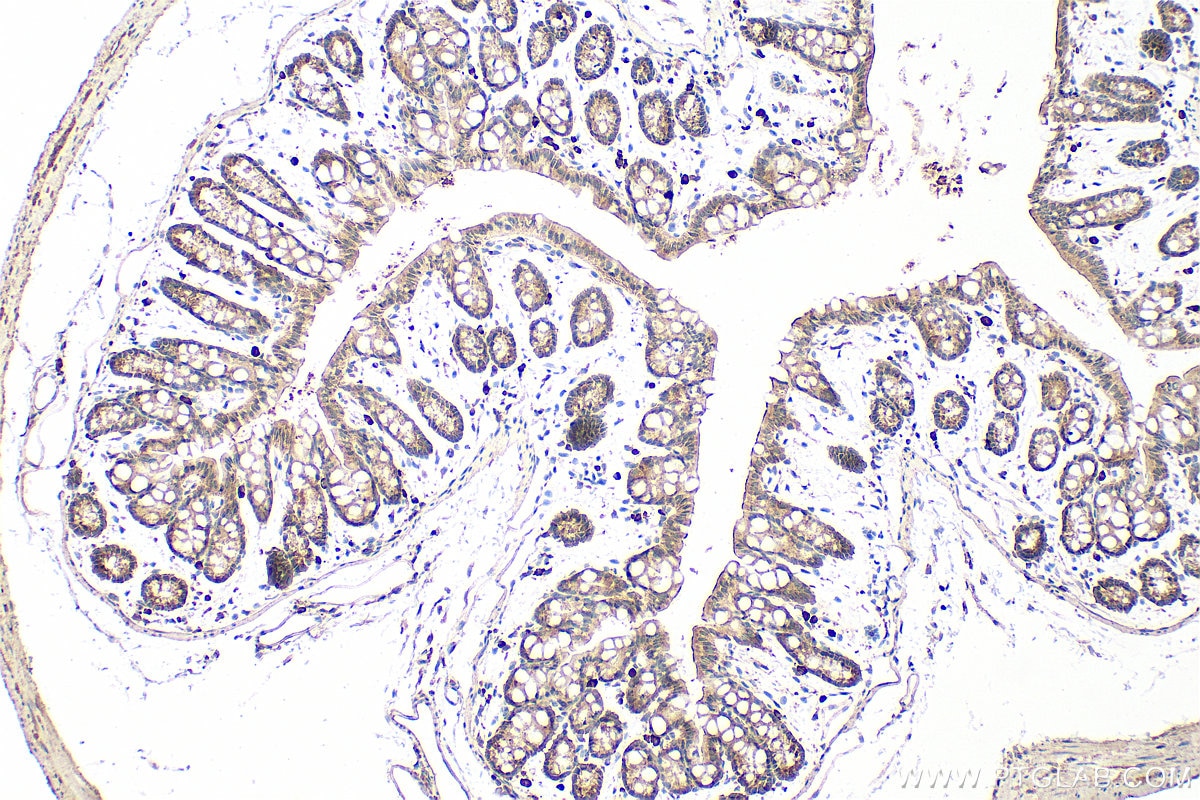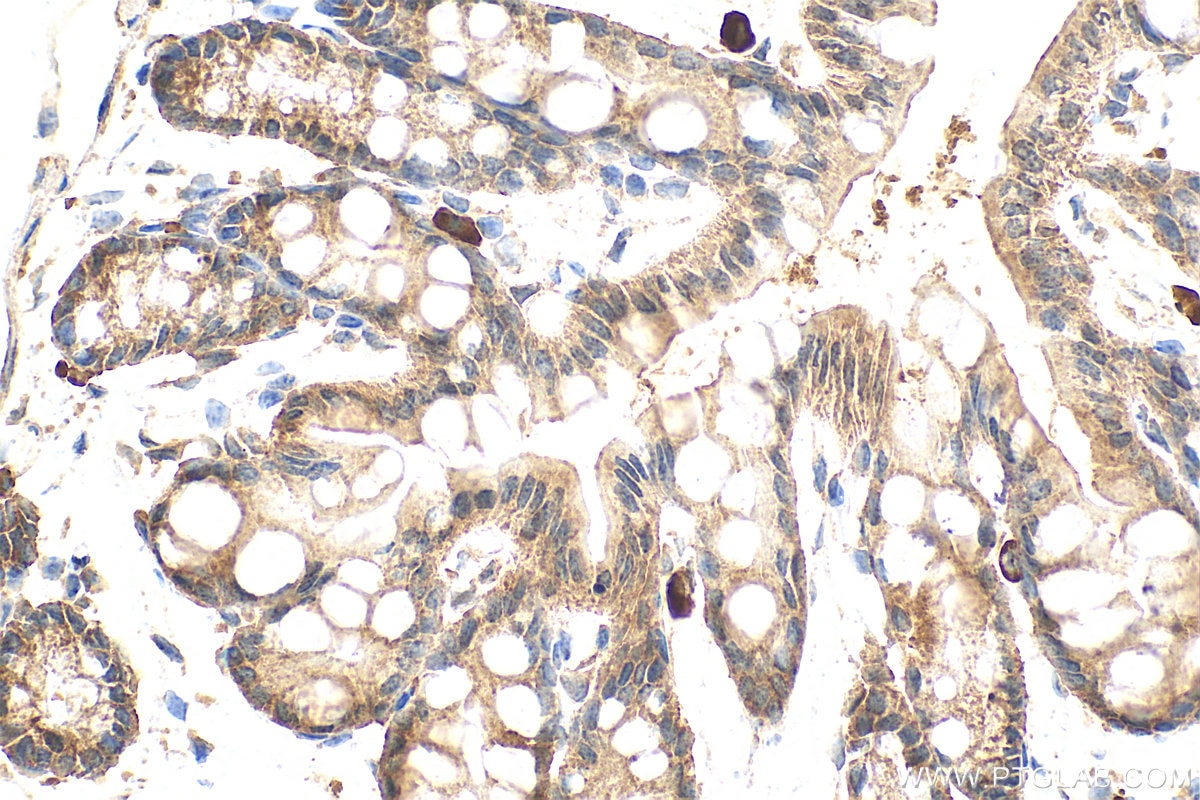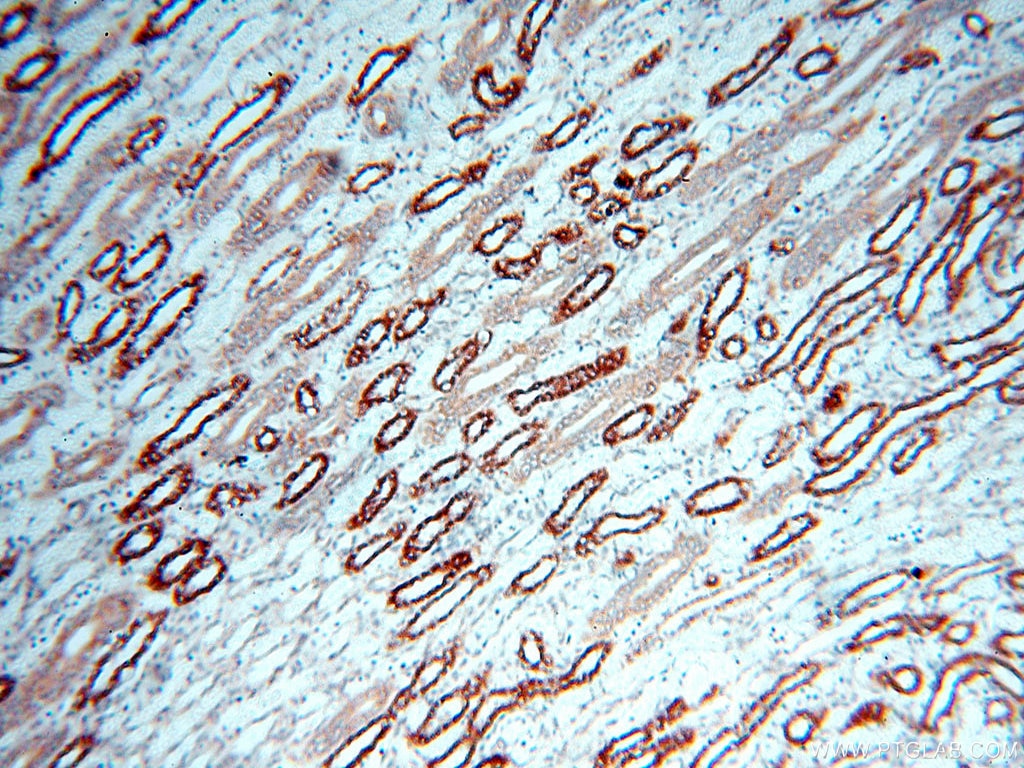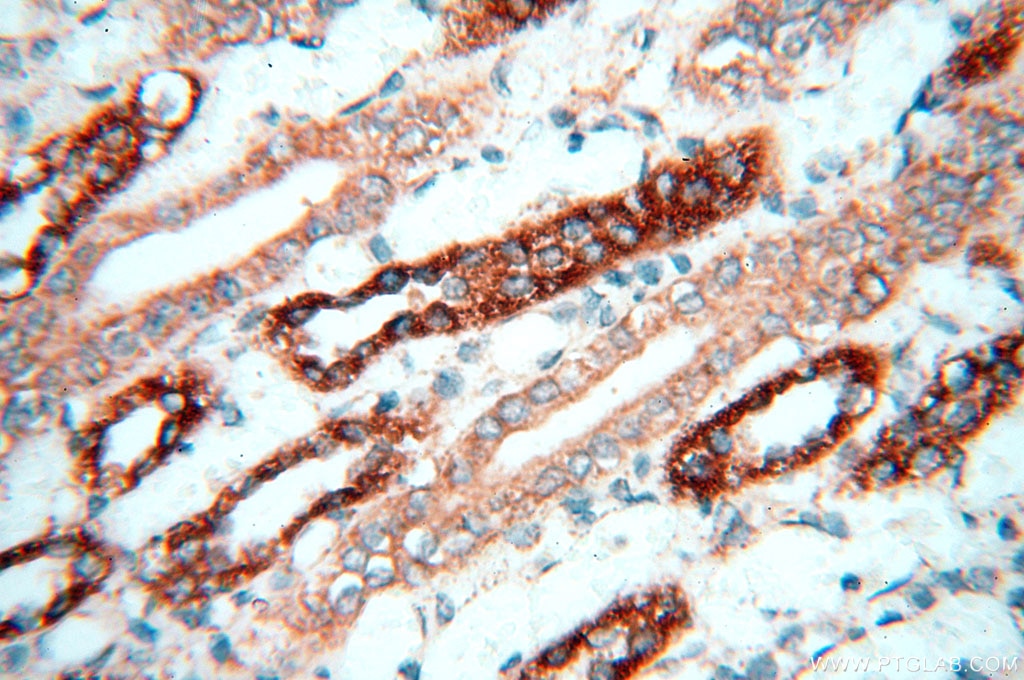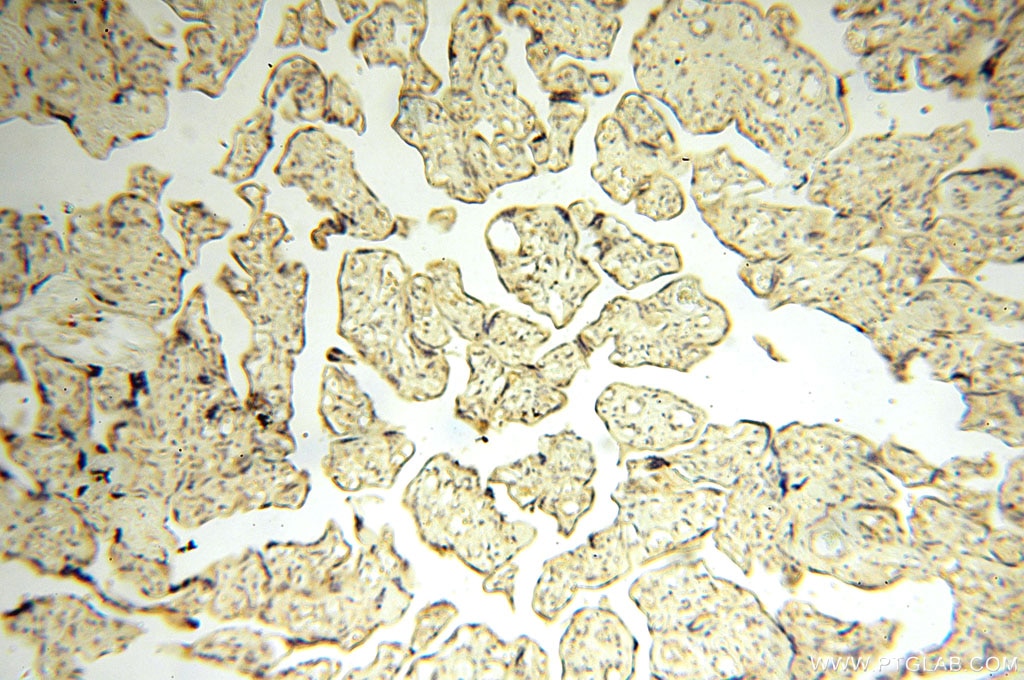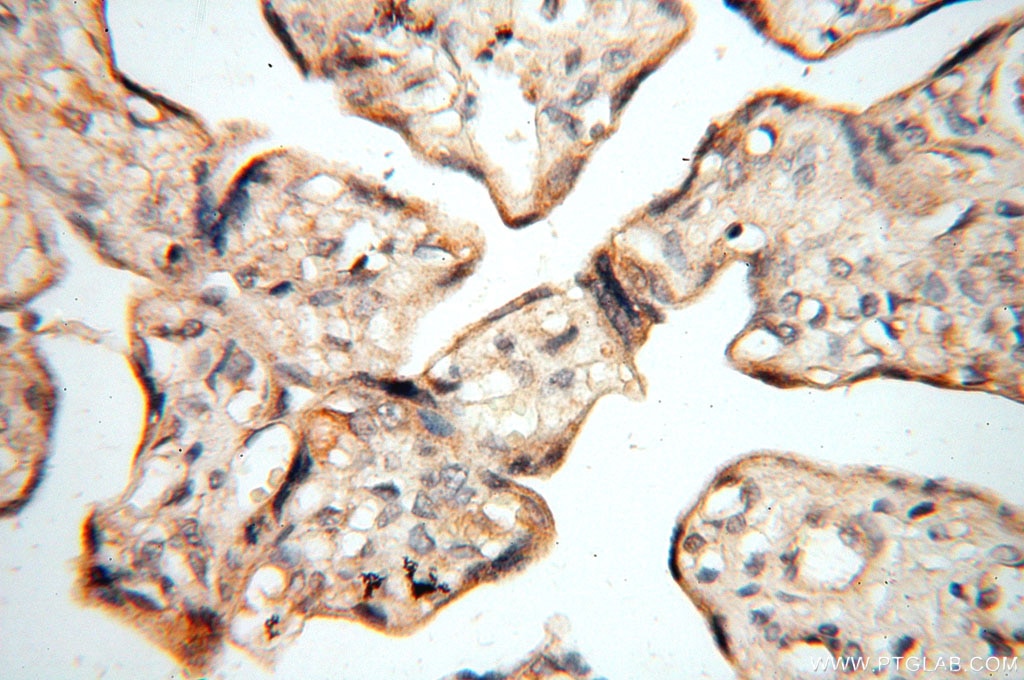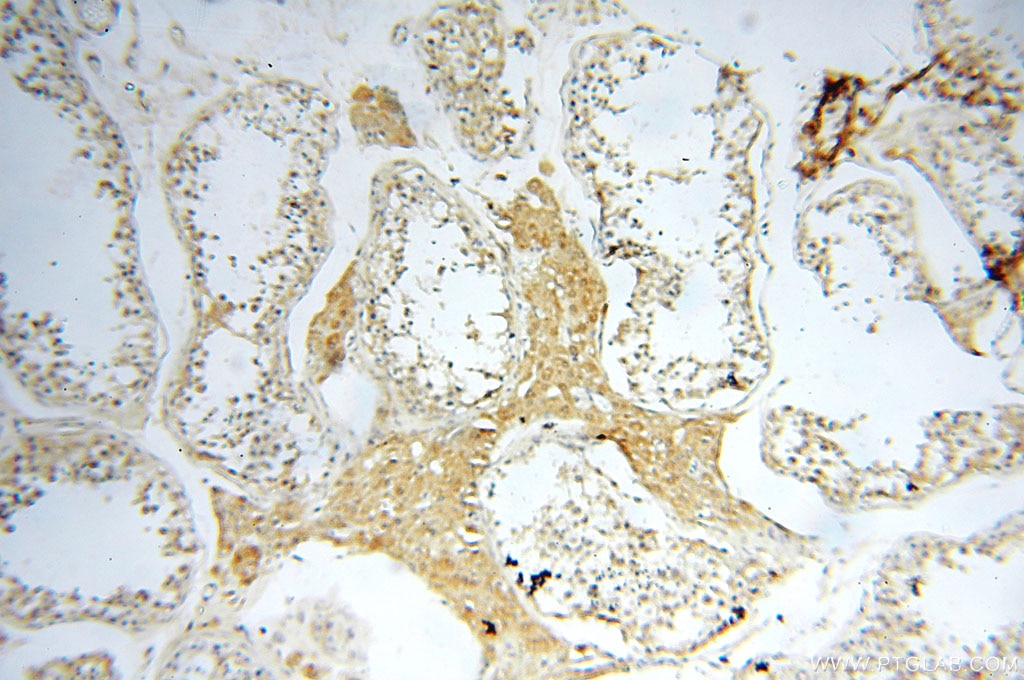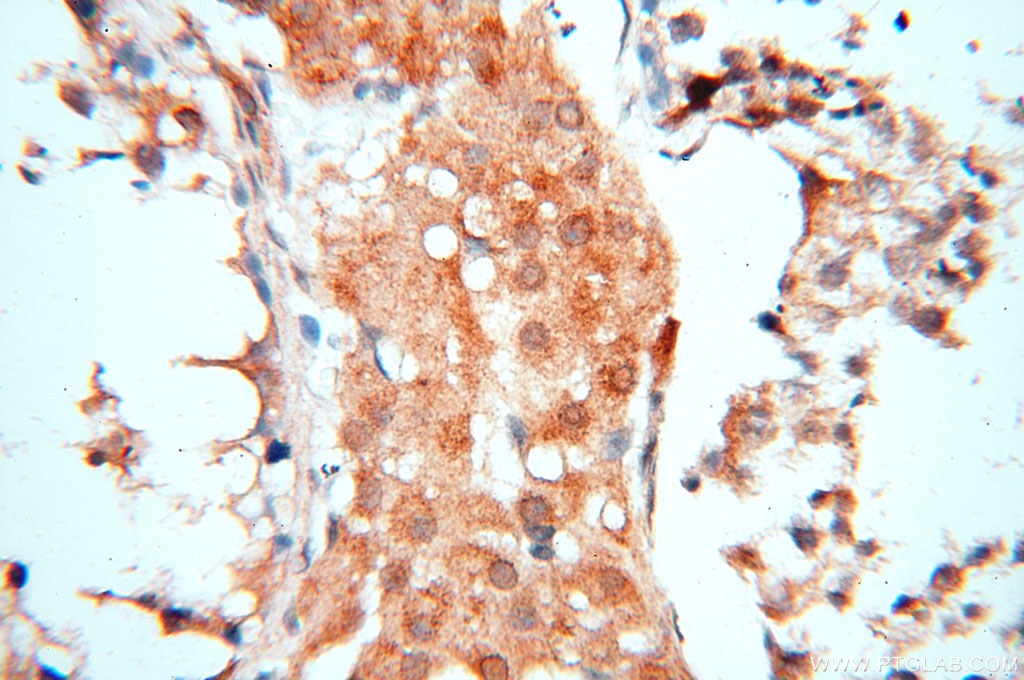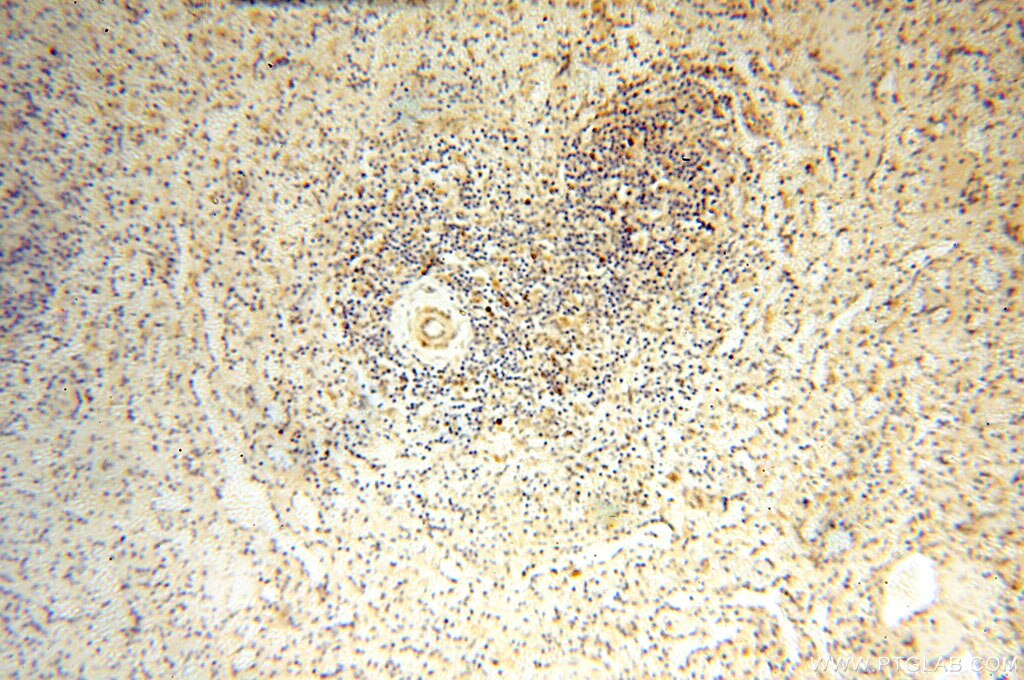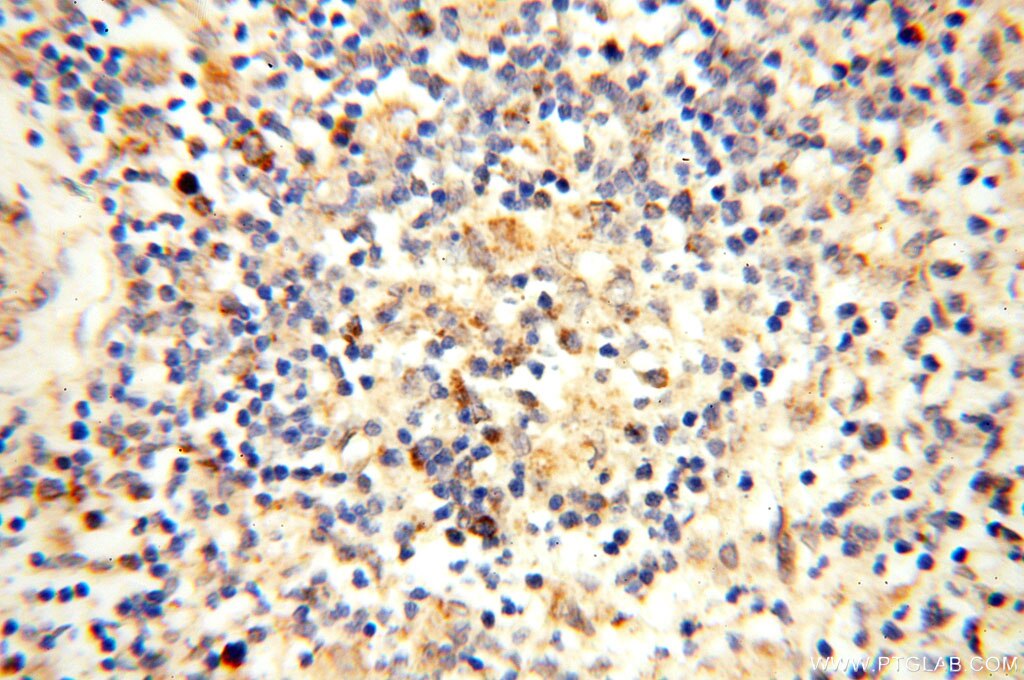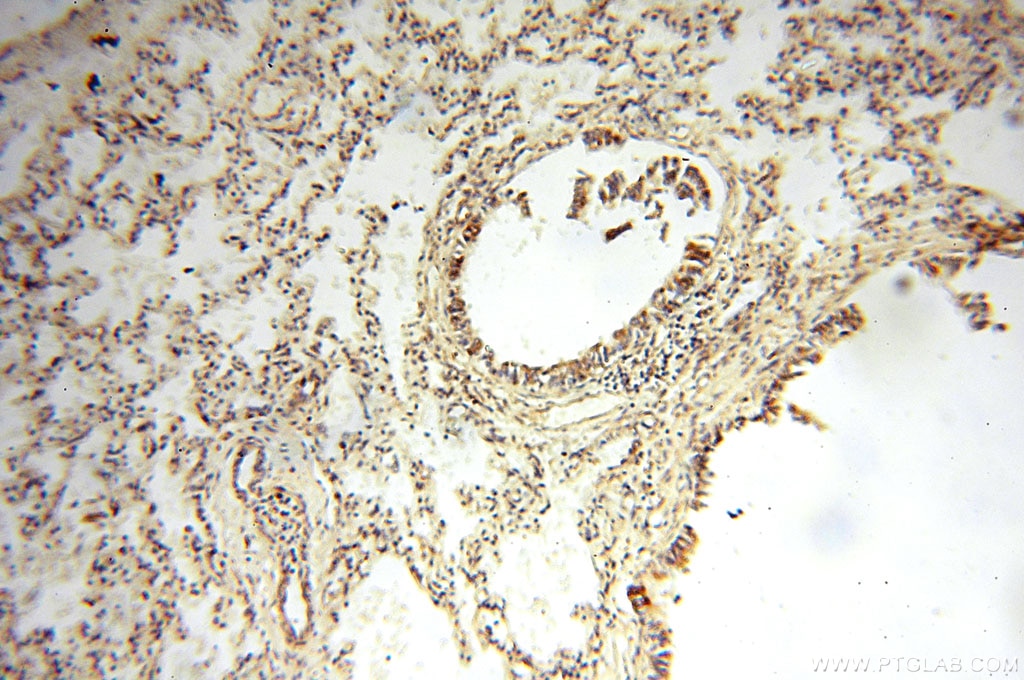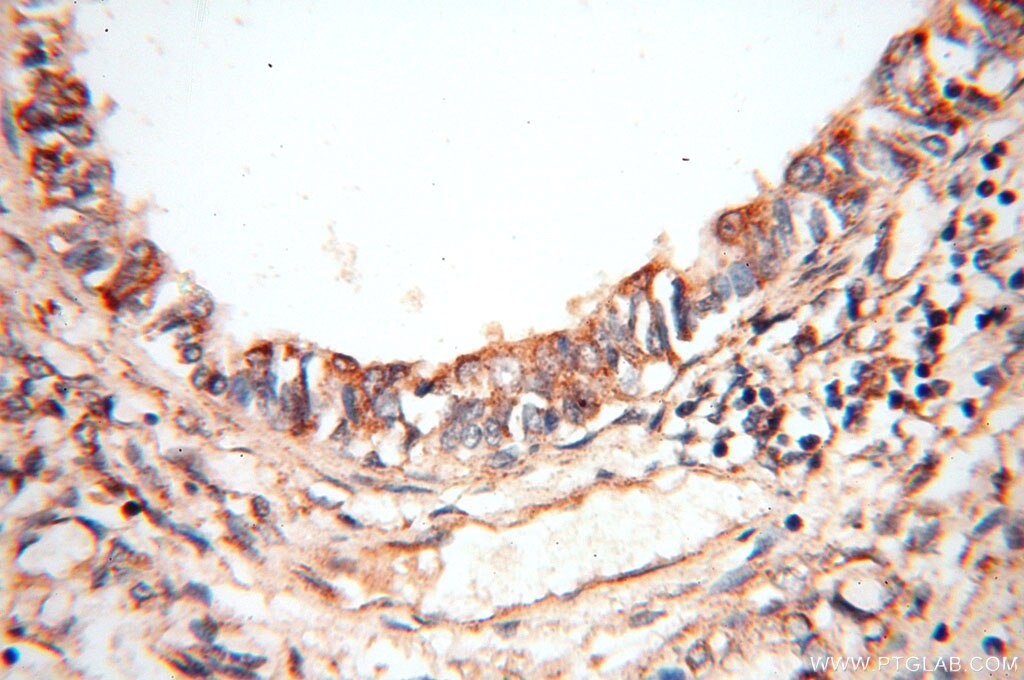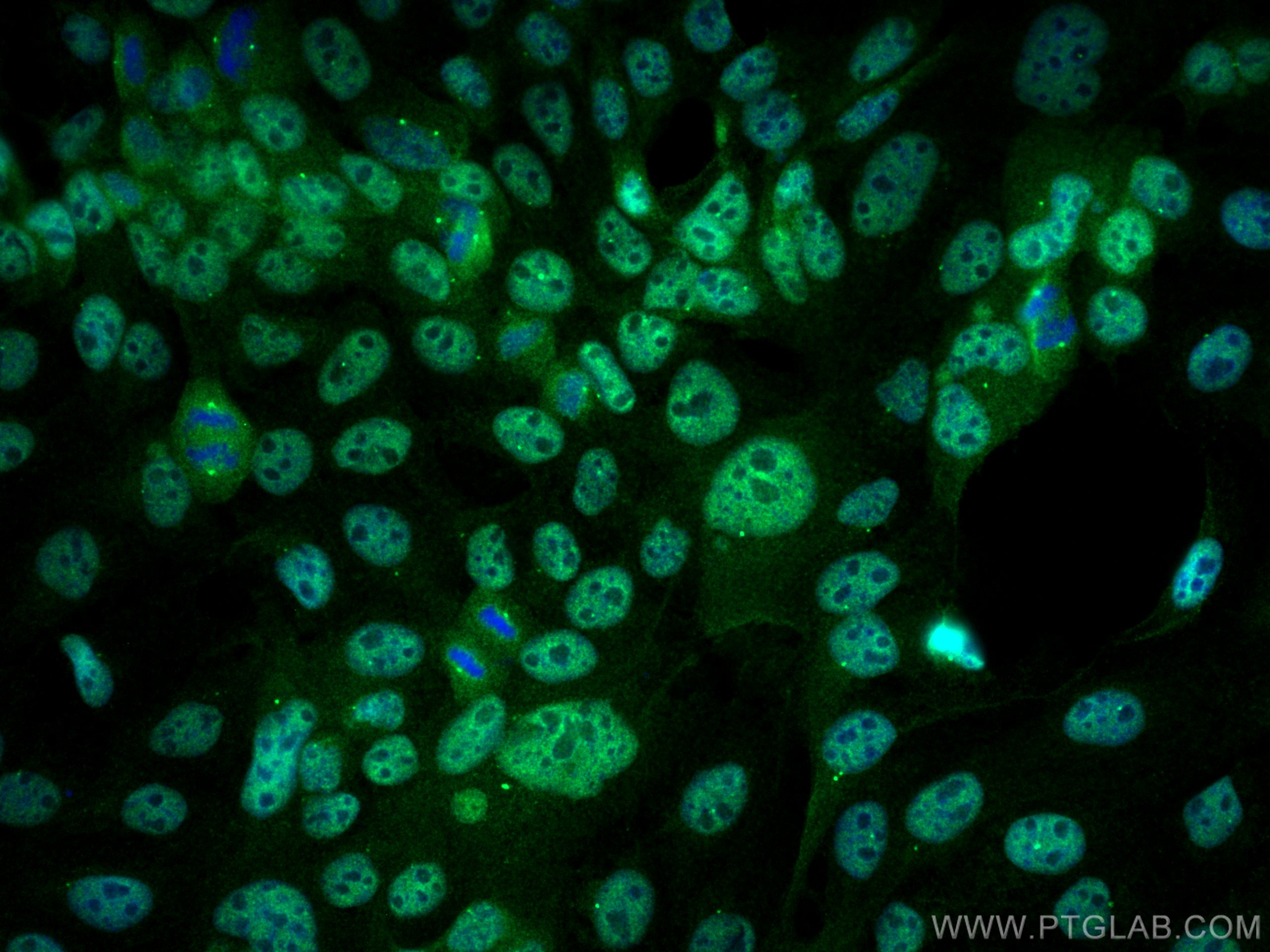- Phare
- Validé par KD/KO
Anticorps Polyclonal de lapin anti-CBLB
CBLB Polyclonal Antibody for WB, IHC, IF/ICC, IP, ELISA
Hôte / Isotype
Lapin / IgG
Réactivité testée
Humain, rat, souris
Applications
WB, IHC, IF/ICC, IP, CoIP, ELISA
Conjugaison
Non conjugué
N° de cat : 12781-1-AP
Synonymes
Galerie de données de validation
Applications testées
| Résultats positifs en WB | cellules HEK-293, cellules A549 |
| Résultats positifs en IP | cellules HEK-293, |
| Résultats positifs en IHC | tissu de côlon de souris, tissu placentaire humain, tissu pulmonaire humain, tissu rénal humain, tissu splénique humain, tissu testiculaire humain il est suggéré de démasquer l'antigène avec un tampon de TE buffer pH 9.0; (*) À défaut, 'le démasquage de l'antigène peut être 'effectué avec un tampon citrate pH 6,0. |
| Résultats positifs en IF/ICC | cellules A431, |
Dilution recommandée
| Application | Dilution |
|---|---|
| Western Blot (WB) | WB : 1:500-1:2000 |
| Immunoprécipitation (IP) | IP : 0.5-4.0 ug for 1.0-3.0 mg of total protein lysate |
| Immunohistochimie (IHC) | IHC : 1:50-1:500 |
| Immunofluorescence (IF)/ICC | IF/ICC : 1:50-1:500 |
| It is recommended that this reagent should be titrated in each testing system to obtain optimal results. | |
| Sample-dependent, check data in validation data gallery | |
Informations sur le produit
12781-1-AP cible CBLB dans les applications de WB, IHC, IF/ICC, IP, CoIP, ELISA et montre une réactivité avec des échantillons Humain, rat, souris
| Réactivité | Humain, rat, souris |
| Réactivité citée | rat, Humain, souris |
| Hôte / Isotype | Lapin / IgG |
| Clonalité | Polyclonal |
| Type | Anticorps |
| Immunogène | CBLB Protéine recombinante Ag3491 |
| Nom complet | Cas-Br-M (murine) ecotropic retroviral transforming sequence b |
| Masse moléculaire calculée | 982 aa, 109 kDa |
| Poids moléculaire observé | 110-130 kDa |
| Numéro d’acquisition GenBank | BC032851 |
| Symbole du gène | CBLB |
| Identification du gène (NCBI) | 868 |
| Conjugaison | Non conjugué |
| Forme | Liquide |
| Méthode de purification | Purification par affinité contre l'antigène |
| Tampon de stockage | PBS with 0.02% sodium azide and 50% glycerol |
| Conditions de stockage | Stocker à -20°C. Stable pendant un an après l'expédition. L'aliquotage n'est pas nécessaire pour le stockage à -20oC Les 20ul contiennent 0,1% de BSA. |
Informations générales
CBLB(E3 ubiquitin-protein ligase CBL-B) is also named RNF56 and plays a necessary role in preventing the inappropriate activation of NF-B in response to lipopolysaccharide and polymicrobial sepsis. CBLB can be phosphorylated on tyrosine and serine residues upon TCR or BCR activation, and various types of cell stimulation. It also has a crucial role in preventing chronic inflammation and autoimmunity. This protein has 3 isoforms produced by alternative splicing 109, 90, and 86 kDa, and observed molecular weight at 110-130 kDa.
Protocole
| Product Specific Protocols | |
|---|---|
| WB protocol for CBLB antibody 12781-1-AP | Download protocol |
| IHC protocol for CBLB antibody 12781-1-AP | Download protocol |
| IF protocol for CBLB antibody 12781-1-AP | Download protocol |
| IP protocol for CBLB antibody 12781-1-AP | Download protocol |
| Standard Protocols | |
|---|---|
| Click here to view our Standard Protocols |
Publications
| Species | Application | Title |
|---|---|---|
Anal Chem Ionic Liquid-Based Extraction System for In-Depth Analysis of Membrane Protein Complexes. | ||
Sci Signal Ubiquitination and functional modification of GluN2B subunit-containing NMDA receptors by Cbl-b in the spinal cord dorsal horn. | ||
J Immunol A Multiple Sclerosis-Associated Variant of CBLB Links Genetic Risk with Type I IFN Function. | ||
J Cell Mol Med NR4A1 counteracts JNK activation incurred by ER stress or ROS in pancreatic β-cells for protection. | ||
Biomolecules miR-27b-3p Attenuates Muscle Atrophy by Targeting Cbl-b in Skeletal Muscles. |
